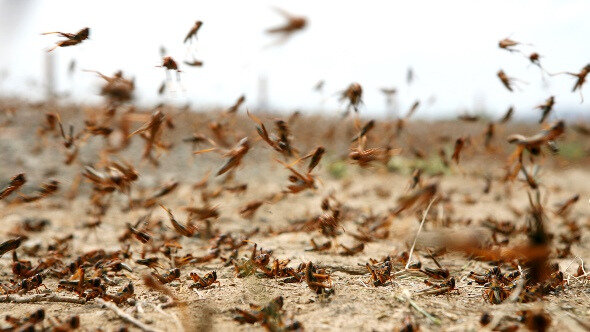FAO warns of Desert Locust outbreaks in Yemen and the Horn of Africa; highlights Iran’s control operations

Desert Locust summer breeding, amplified by heavy rains, can pose a serious threat to agricultural production areas of Yemen, Sudan, Eritrea and parts of Ethiopia and northern Somalia during the next three months, the Food and Agriculture Organization of the United Nations (FAO) warned today. This could result in potentially adverse impacts on the agricultural seasonal yields and local economies affecting food security and livelihoods of the populations in the countries concerned.
Intensive ground and aerial control operations were mounted in Iran (712 000 ha), Saudi Arabia (219 000 ha) and Sudan (105 000 ha) this year that undoubtedly reduced locust populations but could not entirely prevent swarms from forming and moving to the traditional summer breeding areas in Yemen, Sudan, the Horn of Africa and along both sides of the Indo-Pakistan border.
There is a moderate to high risk of the Desert Locust situation escalating further in the interior and coastal areas of Yemen and in the interior of Sudan, causing swarms to form that would threaten agricultural production by the end of the summer. This will be followed by further increases along both sides of the Red Sea during the upcoming winter from November onwards.
Dangerous creatures
After becoming airborne, swarms of tens of millions of locusts can fly up to 150 km a day with the wind. Desert Locusts live about three months, and a female locust lays about 300 eggs. A Desert Locust adult can consume roughly its own weight in fresh food per day -- about two grams every day. A very small swarm eats the same amount of food in one day as about 35 000 people.
Urgent action needed to prevent the spread and save crops
Urgent Desert Locust control operations are required to safeguard crops and to prevent locust swarms from invading the neighbouring countries.
Given the seriousness of the current locust situation, all countries must monitor the field conditions by mounting regular ground surveys and undertaking the necessary control measures whenever important locust infestations are detected.
FAO operates a Desert Locust Information Service that receives and analyzes data from locust-affected countries to assess the current locust situation, provide forecasts and if necessary issue warnings and alerts in order to keep the global community informed of locust developments and threats.
(Source: FAO)
Leave a Comment